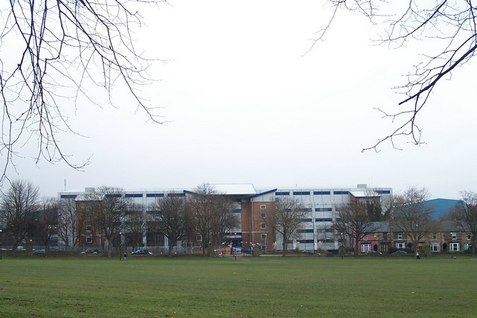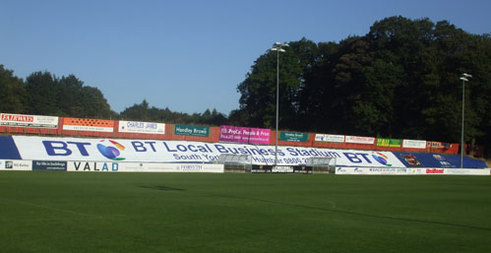Sheffield FC's Grounds
Sheffield FC has been described by many as a somewhat nomadic club. Over its long history they have played at over 10 different grounds. One of the problems Sheffield FC have faced throughout their history is the problems that come with not owning their own stadium or ground. This began with their very first ground, Strawberry Hall Lane Park. From there they went on to play at several other small grounds around Sheffield, until they finally settled for a brief period at Bramall Lane. The trouble that the club had was that, due to their amateur status, they couldn't afford to continue to pay for stadiums, and were eventually forced to move on. Bramall Lane was an exception to this however. Originally (as you can read more about in the Bramall Lane section) the ground was used solely for cricket, and the owners of the ground were reluctant to allow football to played on it. In 1862 Sheffield FC propsed a charity game contested between them and local rivals Hallam FC. This was the original 'Steel City Derby', although the more prominent rivalry between Sheffield United and Wednesday would eventually take the spotlight in 1890. The owners agreed to let Sheffield FC play at Bramall Lane after this charity game but wouldn't let them play regularly. For 13 years they conitnued to use the ground only occasionally for their more important games, but played the majority of games elsewhere. The partnership with the ground's owners was never strong, but in 1875 it eventually fell through completely and they declared that they would never play there again. Following this move, the club eventually found a long-term home at Abbeydale Park.
Abbeydale Park was, and still is to this day, a cricket ground. This was Sheffield FC's first permanent homeground, and although they didn't own it themselves as with all their other grounds, there were no problems like they had with other venues. They continued to play here for over a century, although in a similar manner to the arrangement with Bramall Lane, they would play important fixtures and big games at Sheffield Wednesday's ground Hillsborough (known at the time as Owlerton Stadium).
During the 1990s, they continued this arrangement with Sheffield Wednesday, and played lesser fixtures in the park nearby.
They eventually moved to playing regularly at Sheffield's Don Valley Stadium. This arena was built in 1990 to host the World Student Games, and seated 25,000. This became the club's official home ground, and remained so until they could not afford to keep playing there by the end of the 90s. This is what finally led the club to an important juncture in its history.
In 2001 the lease was up on the Coach and Horses Ground in Dronfield, previously owned by the pub team there. Sheffield FC purchased the ground, and its adjoining land. They did this with the idea in mind of developing a proper stadium.
In 2001 the lease was up on the Coach and Horses Ground in Dronfield, previously owned by the pub team there. Sheffield FC purchased the ground, and its adjoining land. They did this with the idea in mind of developing a proper stadium.
The ground was renamed the BT Local Business Stadium when they moved in for sponsorship reasons. They celebrated the opening of their first permanent home with an exhibition game against Manchester United.
The club remains here today, and will continue to do so for the forseeable future.
The club remains here today, and will continue to do so for the forseeable future.



